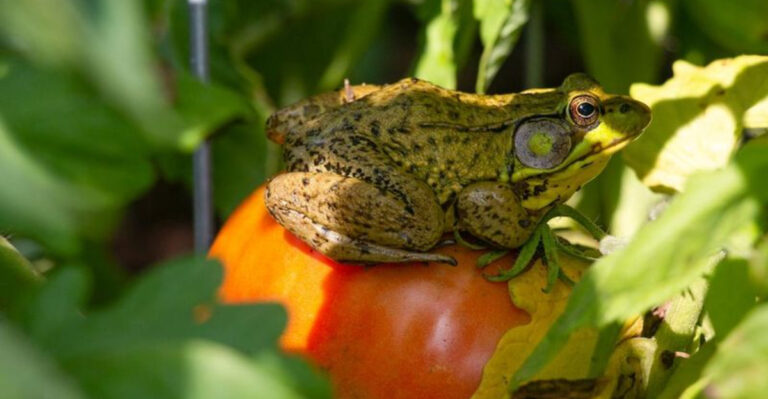10 Things To Do If You Find A Skunk In Your Yard
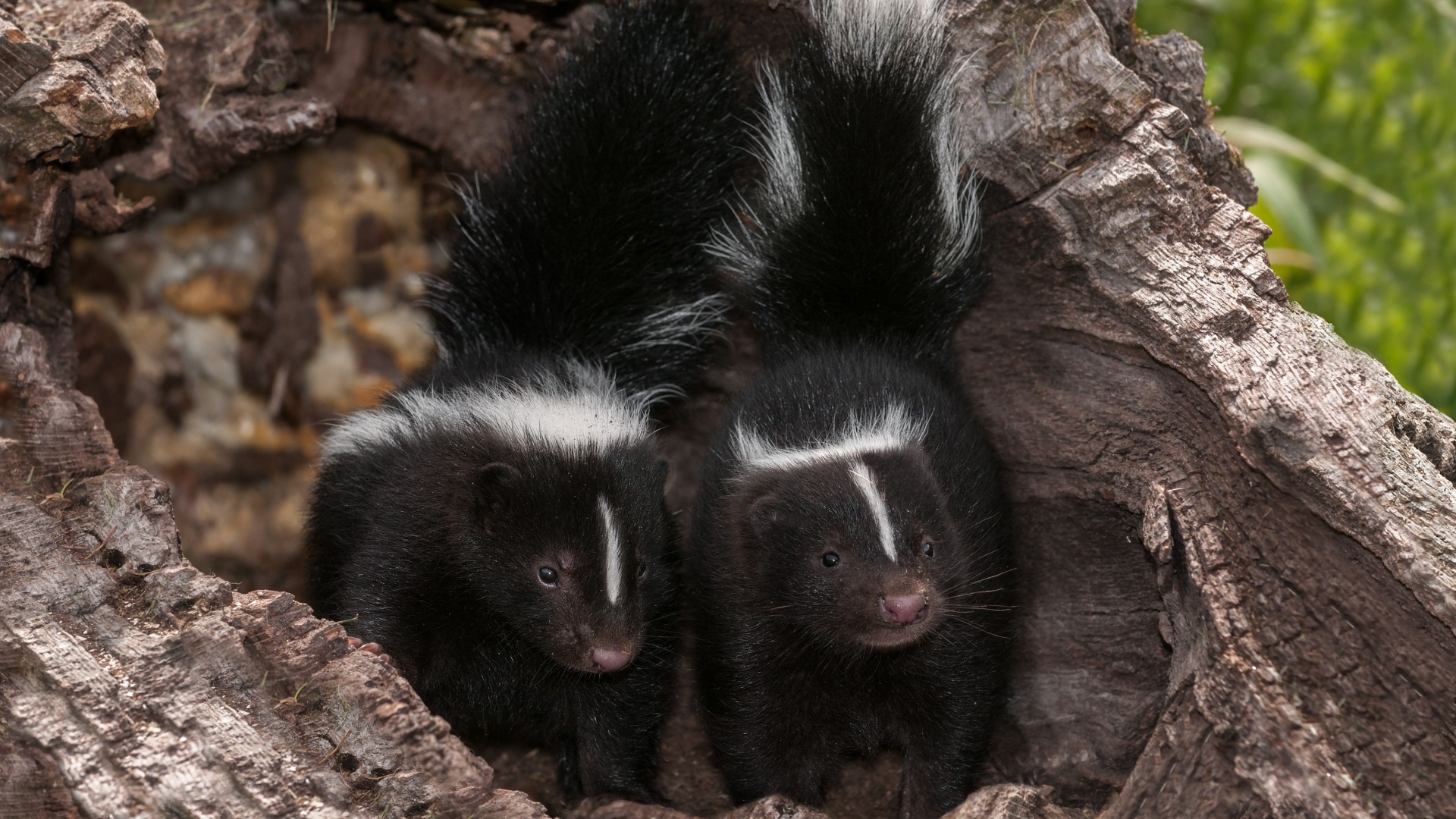
Encountering a skunk in your yard can be a surprising and aromatic experience. These black-and-white critters are known for their potent defense mechanism, so it’s important to approach the situation with care.
Rather than panic, take a moment to enjoy the unexpected wildlife interaction and consider these thoughtful actions you can take to ensure both you and the skunk remain calm and safe.
So next time you spot a skunk, remember: there’s no need to raise a stink!
1. Keep Your Distance
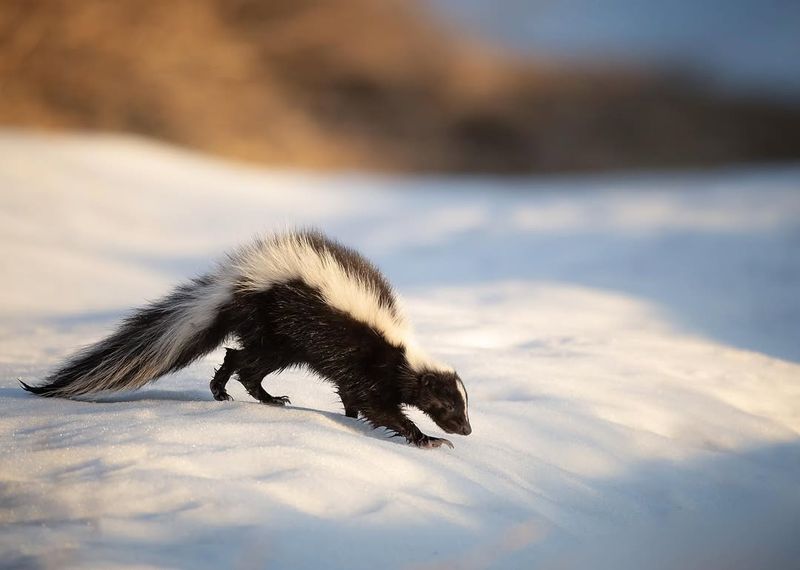
First things first, skunks are not the kind of animals you want to get too friendly with. Keeping your distance is key. Skunks have poor vision but a great sense of smell, so try to stay downwind to avoid alarming them. The last thing you want is for the skunk to feel threatened and release its notorious spray.
Consider this an opportunity to practice your stealth skills! Move slowly and quietly, like a ninja sneaking through the night. Avoid making any sudden movements or loud noises that could startle the skunk. Your best bet is to give it space and let it wander off on its own.
Remember, skunks are generally not aggressive creatures. They’re just trying to go about their business without any hassle. So, resist the urge to chase or corner them. Instead, keep a respectful distance and enjoy the rare chance to observe one of nature’s most interesting critters from afar.
2. Secure Your Pets
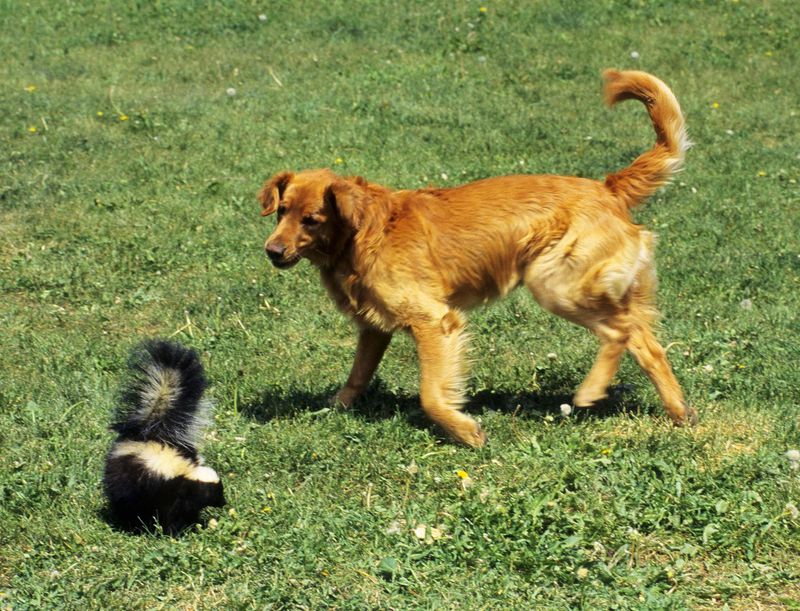
Your furry friends might think of a skunk encounter as just another exciting game of chase, but it could end in a smelly disaster. Securing your pets is crucial to prevent an unexpected skunk spray. Bring your pets indoors or keep them on a leash to avoid any direct interaction with the skunk.
While it might be amusing to watch your dog curiously approach the new visitor, remember that skunks spray in self-defense. A curious sniff could lead to a smelly situation that no amount of tomato juice can quickly fix. Keeping your pets away ensures a peaceful departure for the skunk and a clean, odor-free environment for you.
Additionally, this is a good opportunity to teach your pets about respecting wildlife. Reinforce commands like “stay” or “leave it” to help them understand the importance of keeping a distance from unfamiliar animals. This proactive approach not only safeguards your pets but also promotes a harmonious coexistence with wildlife.
3. Observe From A Safe Spot
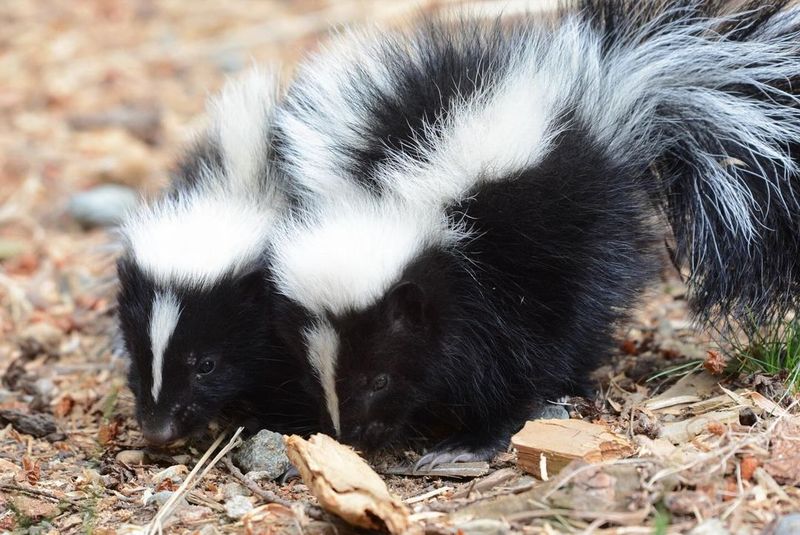
Imagine you’re on a wildlife safari, but instead of Africa, it’s your own backyard. Observing a skunk from a safe spot can be both entertaining and educational. Grab your binoculars and take a moment to watch this nocturnal visitor as it goes about its business.
From the safety of your home or a safe distance, observe the skunk’s behavior. Notice how it sniffs around, perhaps looking for food or just exploring. This can be a fun and educational activity, especially for kids, who get to see wildlife in action without leaving their home.
Use this opportunity to discuss skunks with your family, sharing interesting facts and debunking myths. Skunks are more than just their smell – they play a crucial role in the ecosystem by controlling insect and rodent populations. So, take a moment to appreciate the skunk’s visit, knowing you’re witnessing a small but essential part of nature’s balance.
4. Remove Attractants
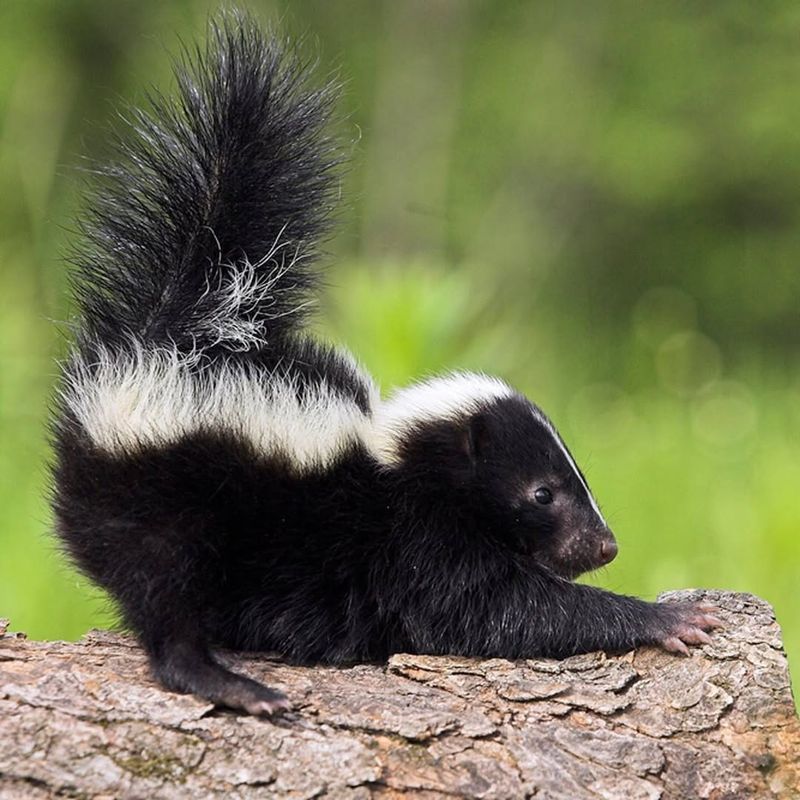
Did you know your yard might be a skunk’s dream buffet? Removing attractants is a simple yet effective way to make your yard less inviting. Skunks are scavengers and omnivores, so they’re drawn to easily accessible food sources.
Start by securing your trash cans with tight-fitting lids to prevent skunks from accessing your leftovers. If you have pets, avoid leaving pet food outside overnight. Skunks have a keen sense of smell and can quickly find unattended pet food.
Inspect your yard for fallen fruit or bird seed that might have spilled from feeders. By keeping your yard clean and free of potential food sources, you’re sending a clear message to skunks that there’s no free meal here. This simple action can significantly reduce the likelihood of skunks paying your yard another visit.
5. Understand Skunk Behavior
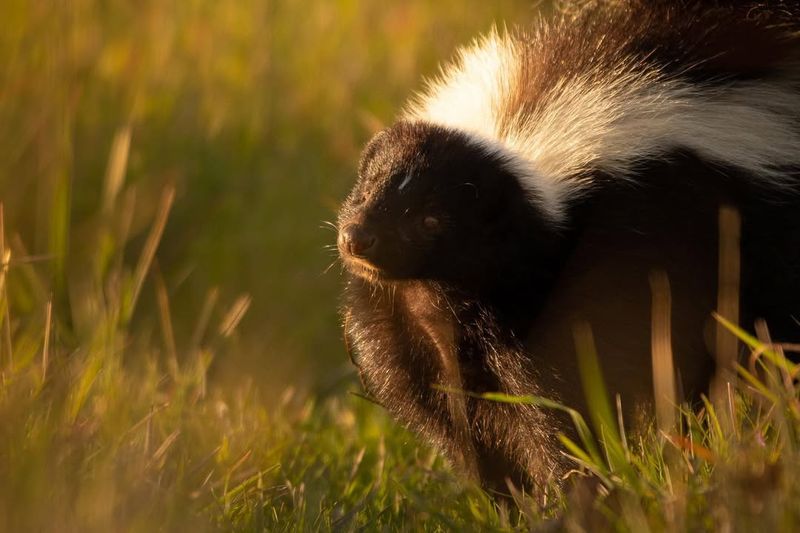
Knowledge is power, especially when it comes to dealing with wildlife. Understanding skunk behavior can help you coexist peacefully with these misunderstood creatures. Skunks are generally non-aggressive and prefer to avoid confrontations.
Skunks are most active during the night, which is when you’re most likely to spot them in your yard. They have a varied diet that includes insects, plants, and small animals, contributing positively to controlling pests. Recognizing this can help reduce any fear or apprehension you might have about their presence.
By learning more about skunks, you’ll discover that they only spray as a last resort. Their infamous scent is a defense mechanism, something they prefer not to waste unless absolutely necessary. Embrace this knowledge to develop a more informed and compassionate perspective towards these fascinating creatures.
6. Call A Professional
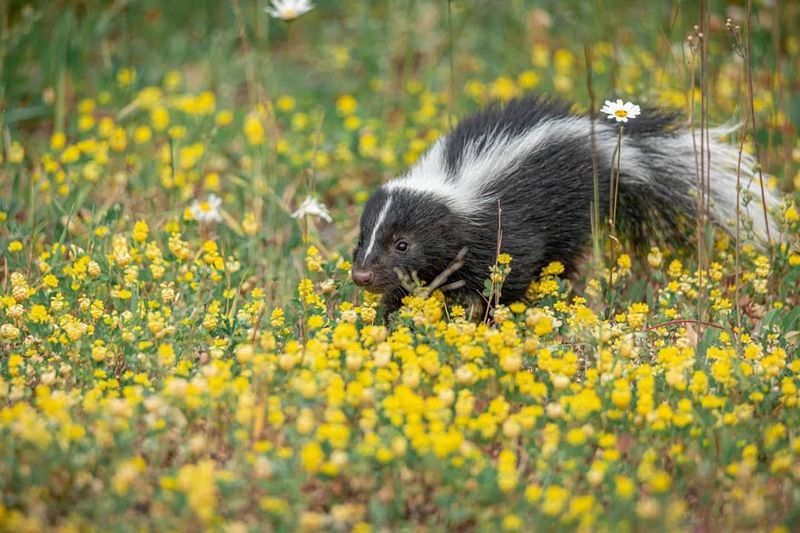
When dealing with wildlife, sometimes it’s best to leave it to the professionals. Calling a wildlife control expert can be a wise decision if you’re unsure about handling a skunk situation on your own.
These professionals are trained to safely and humanely manage wildlife encounters. They can assess your yard, identify why skunks are visiting, and offer solutions to prevent future visits. Should the skunk need to be relocated, they have the tools and expertise to do so without harm to the animal.
Remember, skunks are protected by wildlife laws in many areas, and handling them improperly can lead to unintended consequences. By consulting a professional, you’re ensuring both your safety and the skunk’s well-being. This approach not only resolves your immediate concerns but also helps in maintaining a balanced and respectful relationship with local wildlife.
7. Enjoy The Moment
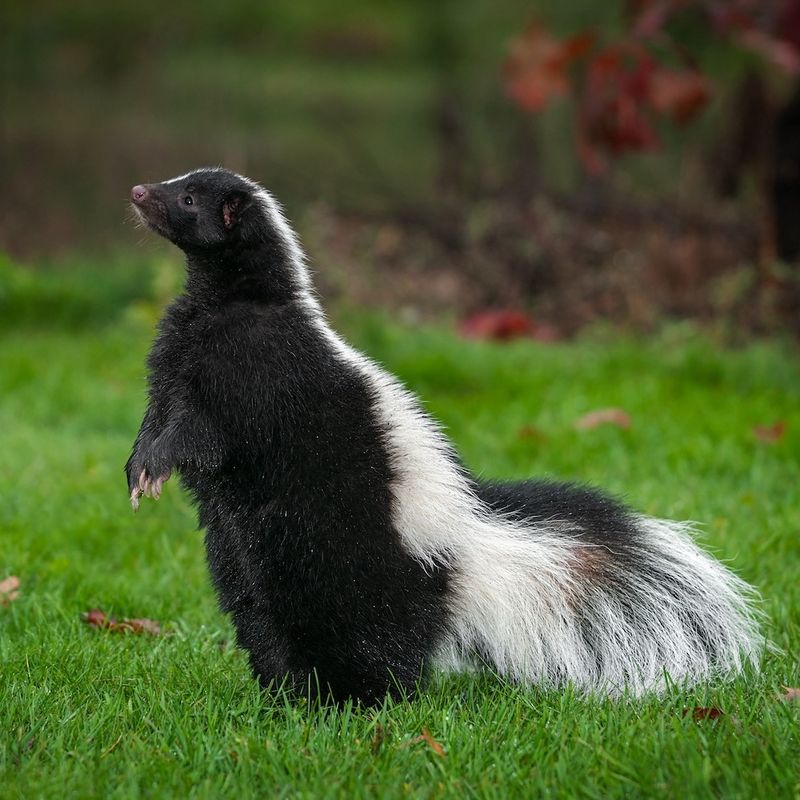
Sometimes, life throws unexpected surprises your way – like a skunk in your yard. Instead of stressing, why not savor the moment and enjoy nature’s show? Watching a skunk from a safe distance can be a delightful experience.
Take a seat, relax, and marvel at how the skunk moves with purpose, sniffing around and exploring its surroundings. This is an opportunity to appreciate wildlife without the need for a long trek into the wilderness. It’s a reminder of the beauty and spontaneity that nature brings to our lives.
Embrace this unexpected guest as a reminder of the diverse ecosystem we share. The next time you spot a skunk, instead of rushing for the door, pause and enjoy this little slice of the wild unfolding in your own backyard. It’s a chance to reconnect with nature in the most surprising way.
8. Keep Calm And Carry On
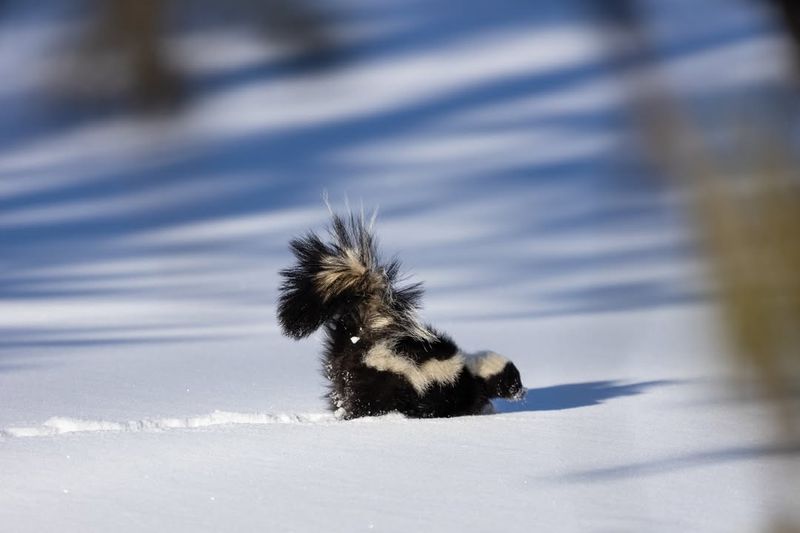
Finding a skunk in your yard might initially spark panic, but staying calm is your best strategy. Skunks are not aggressive and generally avoid humans if left alone. By keeping your composure, you’re more likely to avoid any smelly surprises.
If you’re feeling anxious, take a deep breath and remember that skunks are simply passing through. Engage in a calming activity like yoga or meditation to ease your nerves while keeping an eye on the skunk from a safe distance.
Maintaining a calm demeanor not only helps you think clearly but also prevents alarming the skunk. By reacting with tranquility, you’re ensuring a peaceful coexistence with your unexpected visitor, allowing it to move on without incident.
9. Read Up On Skunks
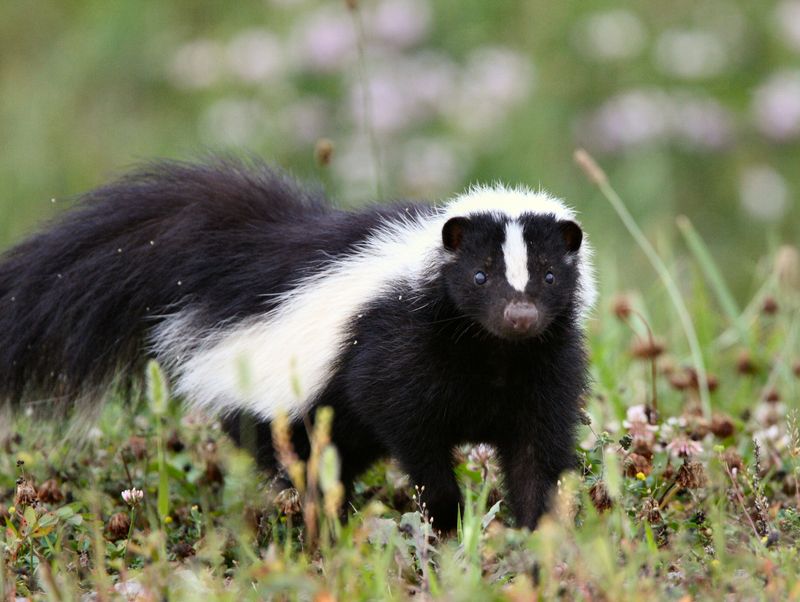
Before you react to a skunk’s presence, why not take a moment to read up on these interesting creatures? Skunks are often misunderstood, and learning about them can transform your perspective.
Dive into books or online resources that explore skunk habitats, diet, and behavior. Understanding their role in the ecosystem can help alleviate fears and build appreciation for their presence. You’ll soon discover that there’s more to skunks than their infamous spray.
Armed with knowledge, you can approach any future encounters with confidence and calmness. Reading about skunks not only educates but also equips you with fascinating facts to share during your next wildlife discussion, making you the neighborhood skunk expert.
10. Respect Their Space
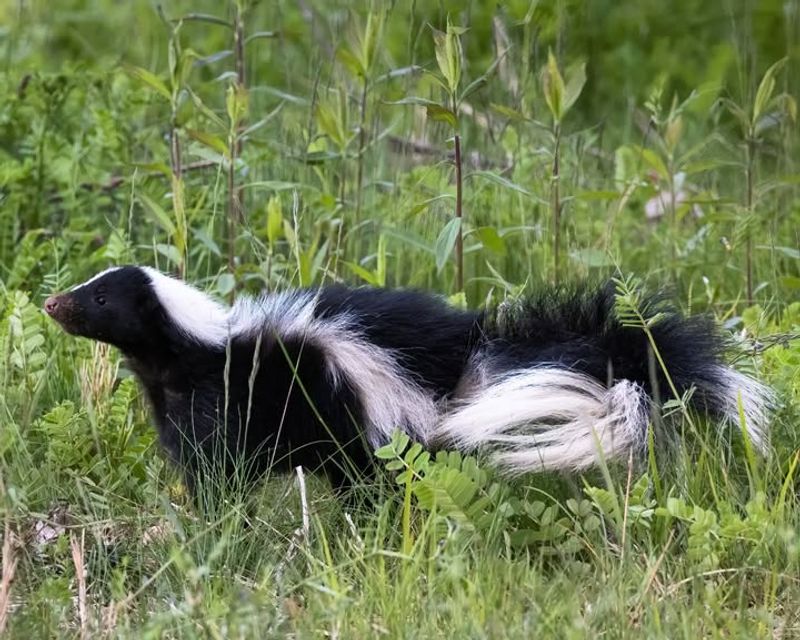
The golden rule of skunk encounters? Respect their space. Skunks are more afraid of you than you are of them. By respecting their space, you’re minimizing the chances of startling them.
Approach any skunk encounter with mindfulness. Avoid chasing or attempting to touch them, as this can provoke a defensive reaction. Instead, admire them from afar, treating them as you would any other wild animal – with caution and respect.
By respecting the skunk’s space, you’re contributing to a peaceful coexistence between humans and wildlife. It’s a gentle reminder that our yards are part of a larger ecosystem, shared with creatures of all kinds. This mutual respect allows for harmonious living alongside nature’s diverse inhabitants.


